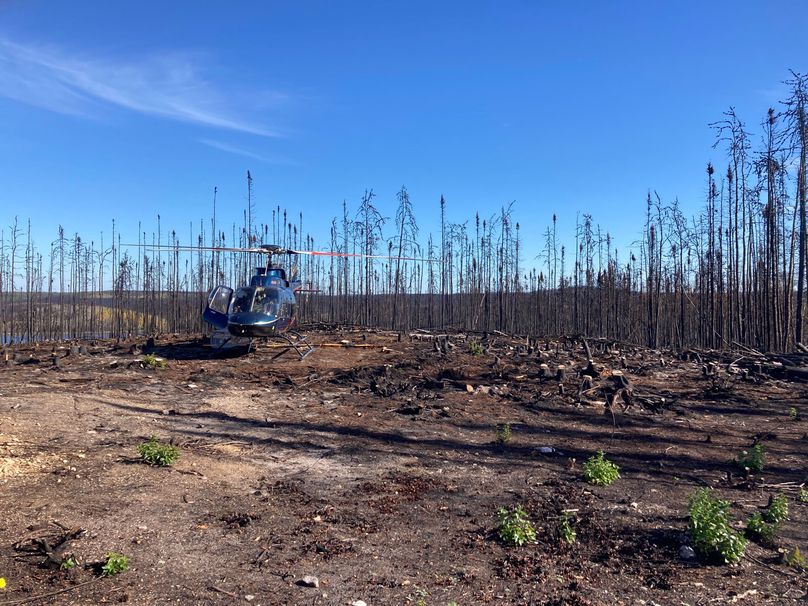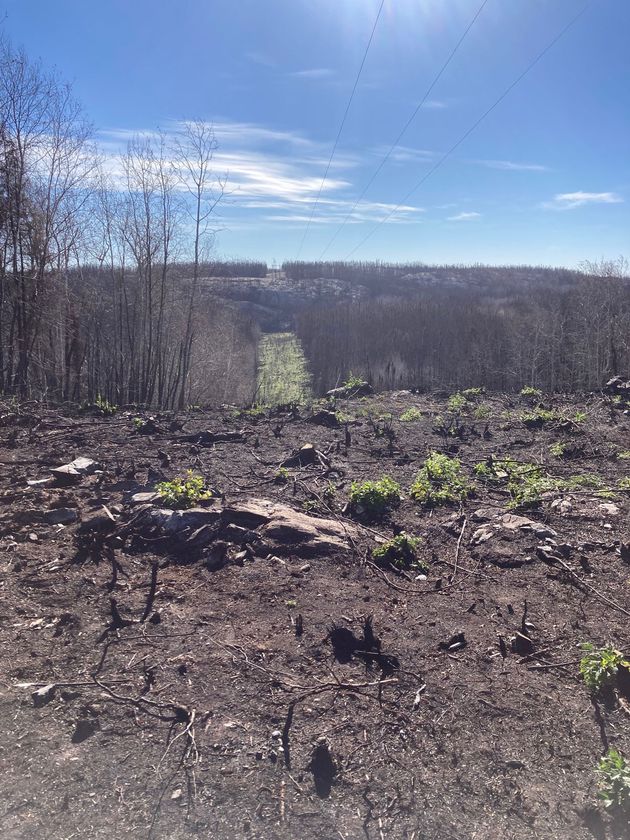It’s taken 3 months, 34 emergency operations meetings, 32 rail cars of supplies, and 63 pole replacements, but on October 8, 2022, the electrical supply to Pukatawagan was fully restored. The line feeding the community, ravaged by wildfire in mid-July, is now completely repaired.
“We couldn’t be happier about restoring this community,” said Colin Thomson, department manager in the area. “Had a couple hiccups here and there with generators, but overall this was a huge success. A lot of people worked really hard to restore power to the people in Pukatawagan.
Most of all I want to thank the people of Pukatawagan for their patience over the past few weeks.”
In July, a wildfire burned down 63 poles on the line supplying the community. Nearly 2,000 residents were evacuated. Shortly after that, an Emergency Operations Centre (EOC) was established and brought together nearly 20 people from different areas of the corporation who would be involved in the restoration work. At the start, the EOC held daily meetings to keep track of its progress and work through any potential issues. After these meetings, Ian Blouw, a community liaison for Pukatawagan, relayed information to the community via email.

The line into Pukatawagan is now restored. Pictured: rock-set poles.
“Communication was efficient and timely, with daily communication followed shortly thereafter with an email detailing the items discussed,” said Mathias Colomb Cree Nation Chief Lorna Bighetty. “The urgency of matters at our Nation was acknowledged by Hydro staff response on the weekends, in the evenings, and on early mornings.”
Fortunately, the fire missed the rail line going into Pukatawagan, which allowed us to bring in temporary diesel generators to power the community while we worked on permanent infrastructure. That way, community members could be at home instead of spread out over several cities. Two generators went in mid-August, and a third was added later when the electrical load increased.
“Going home means the safety and wellbeing of our community and our members,” said Chief Bighetty. “Hydro’s response providing generators and the manpower to install and service the community in record time demonstrates a new relationship.”
After the generators went in, EOC meetings became less frequent — two days a week instead of five — but the remaining work still wasn’t easy. Crews needed to set poles around steep cliffs, marsh, and rock, and many of those sites were fly-in only. Generators, fuel, and materials required to fix the line arrived in Pukatawagan by rail — 27 cars the first time, and five more as repairs progressed. Once materials arrived to Pukatawagan, it had to be flown by helicopter to sites along the damaged line.

Supplies had to be flown from Pukatawagan to various sites along the power line feeding the community.
“I’m so proud of everyone involved here,” said Shane Mailey (Vice-President of Operations). “This was pretty much two big projects: getting the generators to Pukatawagan was a huge effort, but replacing, re-stringing, and trimming trees around poles wasn’t easy either. And even when there were problems, the team solved them at the EOC meetings. It was great to see.”

The right-of-way along the line feeding Pukatawagan.
Though the power is back and the bulk of the work is complete, crews in the area will continue to trim hazard trees around the line to reduce the likelihood of this happening again.
“Mathias Colomb Cree Nation has a high population of infants, youth, and Elders,” said Chief Bighetty. “Hydro being fully restored provides energy to cook food and provide heat for our most vulnerable.”



